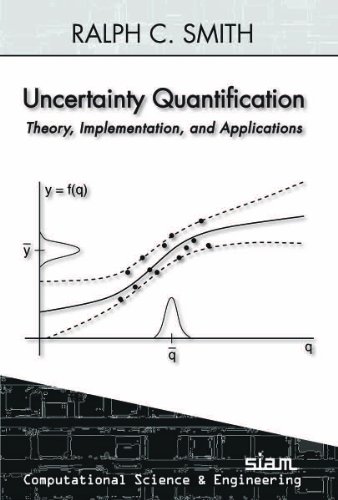

Most ebook files are in PDF format, so you can easily read them using various software such as Foxit Reader or directly on the Google Chrome browser.
Some ebook files are released by publishers in other formats such as .awz, .mobi, .epub, .fb2, etc. You may need to install specific software to read these formats on mobile/PC, such as Calibre.
Please read the tutorial at this link: https://ebookbell.com/faq
We offer FREE conversion to the popular formats you request; however, this may take some time. Therefore, right after payment, please email us, and we will try to provide the service as quickly as possible.
For some exceptional file formats or broken links (if any), please refrain from opening any disputes. Instead, email us first, and we will try to assist within a maximum of 6 hours.
EbookBell Team

0.0
0 reviewsThe book begins with a detailed discussion of applications where uncertainty quantification is critical for both scientific understanding and policy. It then covers concepts from probability and statistics, parameter selection techniques, frequentist and Bayesian model calibration, propagation of uncertainties, quantification of model discrepancy, surrogate model construction, and local and global sensitivity analysis. The author maintains a complementary web page where readers can find data used in the exercises and other supplementary material.
Uncertainty Quantification: Theory, Implementation, and Applications includes a large number of definitions and examples that use a suite of relatively simple models to illustrate concepts; numerous references to current and open research issues; and exercises that illustrate basic concepts and guide readers through the numerical implementation of algorithms for prototypical problems. It also features a wide range of applications, including weather and climate models, subsurface hydrology and geology models, nuclear power plant design, and models for biological phenomena, along with recent advances and topics that have appeared in the research literature within the last 15 years, including aspects of Bayesian model calibration, surrogate model development, parameter selection techniques, and global sensitivity analysis.
Audience: The text is intended for advanced undergraduates, graduate students, and researchers in mathematics, statistics, operations research, computer science, biology, science, and engineering. It can be used as a textbook for one- or two-semester courses on uncertainty quantification or as a resource for researchers in a wide array of disciplines. A basic knowledge of probability, linear algebra, ordinary and partial differential equations, and introductory numerical analysis techniques is assumed.
Contents: Chapter 1: Introduction; Chapter 2: Large-Scale Applications; Chapter 3: Prototypical Models; Chapter 4: Fundamentals of Probability, Random Processes, and Statistics; Chapter 5: Representation of Random Inputs; Chapter 6: Parameter Selection Techniques; Chapter 7: Frequentist Techniques for Parameter Estimation; Chapter 8: Bayesian Techniques for Parameter Estimation; Chapter 9: Uncertainty Propagation in Models; Chapter 10: Stochastic Spectral Methods; Chapter 11: Sparse Grid Quadrature and Interpolation Techniques; Chapter 12: Prediction in the Presence of Model Discrepancy; Chapter 13: Surrogate Models; Chapter 14: Local Sensitivity Analysis; Chapter 15: Global Sensitivity Analysis; Appendix A: Concepts from Functional Analysis; Bibliography; Index